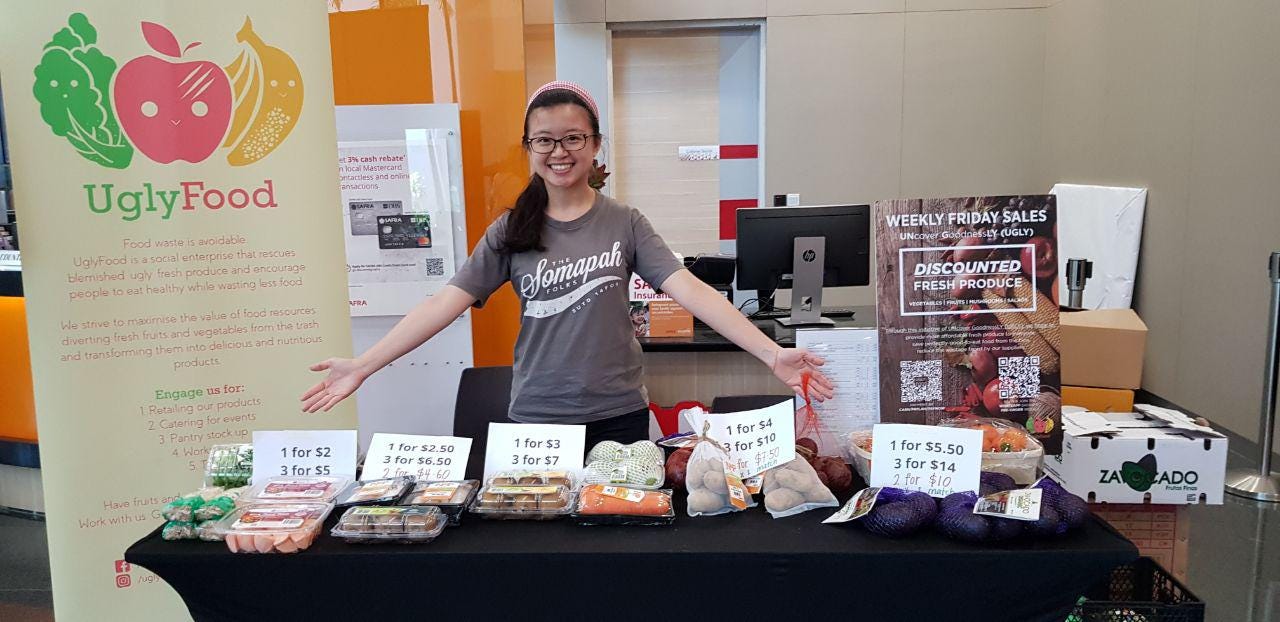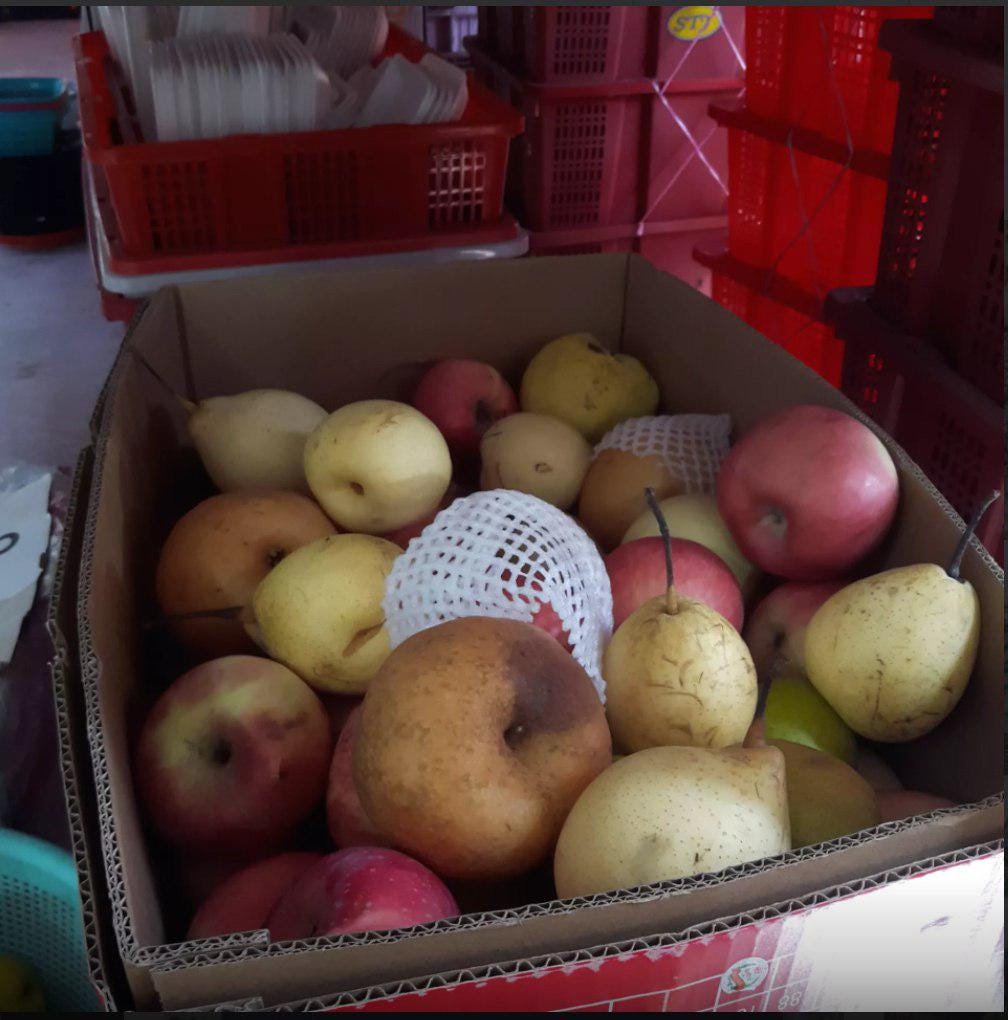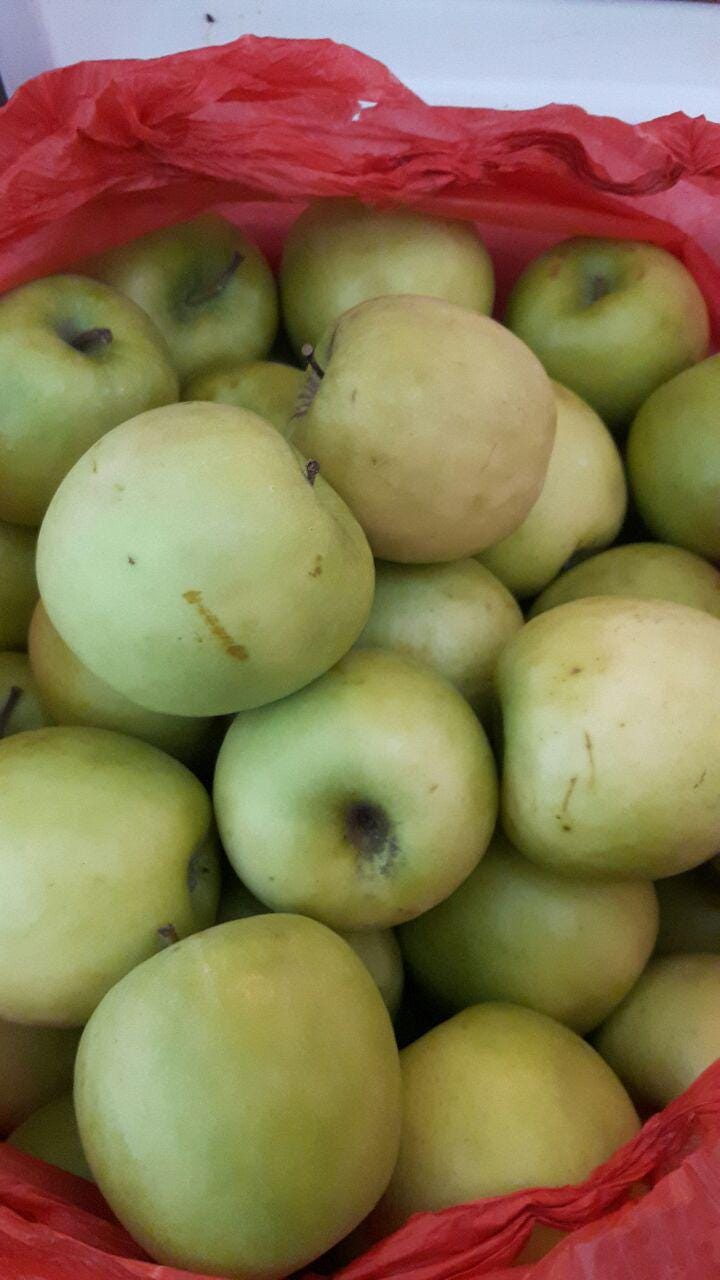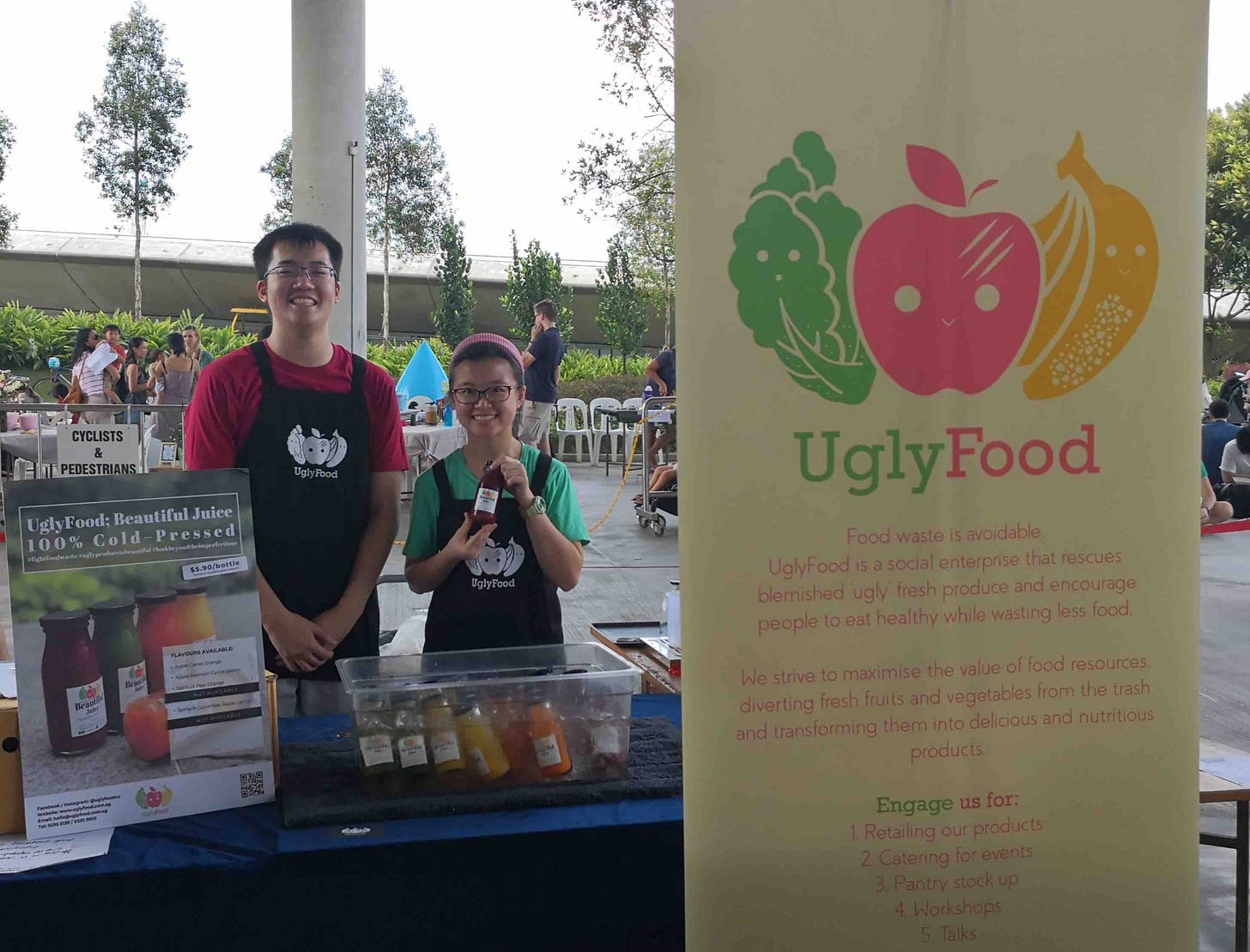Eat smart and well by changing this one habit
Yeo Pei Shan of UglyFood opens you up to a lot of possibilities with this step
It’s seen as a common practice in the food supply chain, and something you've probably done your entire life: cosmetic filtering. It happens when you’re at the grocery, a market stall, a farm or even a restaurant – basically every time you’re faced with a batch of fresh produce.
Yeo Pei Shan, the co-founder and managing director of UglyFood in Singapore – “a social enterprise that rescues ‘ugly’ or unsold fresh produce and encourages people to eat healthy while wasting less food” – explains cosmetic filtering further.
“When we first started UglyFood, we defined cosmetic filtering as (not choosing or discarding) those produce that are naturally out of shape, off-colour, too small or too big,” she says.
“However, as Singapore takes in mainly Class 1 and 2 produce, those are not so easily available. Instead, it is those that are slightly bruised and with small scratches that have been brought to our attention.”
So ask yourself...
How many times have you thoroughly inspected each piece of fruit and vegetable just to make sure you get what you think are the best ones?
We use the word “think” because it can be all about perception. The bruises, scratches, and other small imperfections in these fruits and vegetables don’t necessarily mean they are different – or less fresh and less tasty – than their smooth and seemingly flawless-looking counterparts on the crate or shelf.
And if they don’t get bought, used or consumed, where do they end up? At Singapore’s incineration plants and landfills. “As most foods have a high water content, burning food requires greater amounts of energy than burning general waste,” Pei Shan stresses.
“Imagine burning a tissue versus a tissue soaked with water. More energy is needed! Carbon dioxide produced from burning also contributes to global warming.
“That’s how we started UglyFood – we wanted to reduce such wastage because the produce is still perfectly good to eat. Yet because they are left unsold on the shelf, eventually the shelf life is up and they are discarded,” she maintains.
“We also wanted to mask their 'appearance', so we started our Beautiful Juice initiative in our school and it was very well-received.” UglyFood's Beautiful Juice selection includes nutrient-rich, 100 per cent cold-pressed fruit juices in flavours like Apple Carrot Orange, Pear Carrot Ginger, and Spinach Cucumber Apple Lemon.
Pei Shan reveals that “ugly food” can be a result of two things: over-importing or transportation mishaps. “Hence there’s often an excess supply that would be discarded eventually,” she adds. But there’s another cause or reason: us.
In fact, some of us might be to blame for the following scenarios Pei Shan has encountered so far. Are you guilty of any one (or all) of them?
#1 Watch your hands
“Back then, I saw a fruit stall that had a box full of fruits on the floor, quite well hidden under the tables. The stall owner shared that those are the fruits that got dropped on the ground, or that people pinched, poked and abused till they didn’t look fresh anymore,” Pei Shan recounts.
“He commented that many buyers are inconsiderate and often just press the fruits without much thought, and the fresh fruits turned into ‘ugly food’.”
#2 Size matters
“We were surprised and perhaps did not give much thought about such issues at times, but there are businesses that have to use specific sizes of fresh produce,” she muses.
“For example, one supplier we work with is the orange juice vending machine. To guarantee a consistent volume of juice dispensed, they have to work within a size range of oranges, and they do receive oranges that are bigger or smaller than their desired range.”
#3 What day is it today?
“Additionally, we did not know that some fresh produce do have a ‘Best Before’ date tag to them, and that suppliers have to throw them away because they are nearing that ‘Best Before’ date,” she states.
“We take all those in, we do our checks, and we either use them for our production or resell them as fresh produce.
“Right now, we no longer just deal with ‘ugly’ produce anymore. We also work with suppliers to reduce their wastage and cut their losses when they overestimate their demand and have surplus produce.”
Snap out of it
Habits may be hard to break, but with Pei Shan’s help, we can hopefully overcome cosmetic filtering as buyers and consumers. Here’s how she does it.
#1 Differentiate and know the tell-tale signs that something is likely spoilt
She lists four steps:
• Sight: Signs of mould, a long-exposed open area
• Smell: Fermented smell, foul odour
• Touch: Unusual leaking of juices, slimy parts, large portion of mushy parts (especially for firmer fruits like oranges and apples)
• Taste: Odd taste, sharp taste (“extremely sweet just means it is overripe, but it is perfectly okay!”)
#2 Learn how to store fresh produce longer
• Familiarise yourself with ethylene
“Fresh produce ripens faster in the presence of ethylene. Ethylene is a natural compound that is emitted by fresh produce in varying amounts. The list of ethylene-sensitive fresh produce and ethylene-emitting fresh produce can be easily found online.
“To store fresh produce longer, separate those that are sensitive to ethylene and those that emit ethylene. For those that are both sensitive and emit ethylene, store them individually.”
• Examine the packaging
“For vegetables, do ensure that the packaging has holes to allow air circulation. It also allows the evaporation of water condensation. A good option is reusable produce mesh bags to reduce plastic packaging.”
• Take advantage of those berries
“Sometimes, we do see supermarkets slash prices for berries – be it strawberries, blackberries or blueberries – because they have an excess and might be near to expiry.
“What you can do is remove the mouldy ones, soak them in a basin of diluted vinegar solution, then place them on a paper towel to air dry. Keep them in a sealable silicone bag or container and place in the fridge, or freeze them for a much longer shelf life.
“If kept in the fridge, you must make sure that they are dry because moisture encourages bacterial growth. To ensure that the berries are not frozen and stuck to one another, you can spread the berries in a single layer on a tray and freeze them for an hour or two; then when the berries are hard, place them in labelled freezer bags or containers.”
• Make use of the crisp drawer
“If you can change the settings of the drawer, store vegetables and some fruits in the high-humidity drawer, and store fruits in the low-humidity drawer. The high-humidity drawer is for fresh produce that are sensitive to moisture loss and ethylene. The low-humidity drawer is for fresh produce that are not sensitive to moisture loss or high-ethylene producers.”
#3 Take it as a chance to slow down
“‘Ugly’ produce takes more time to process, yet we can take it as an opportunity to slow down; be mindful and aware of which parts to keep; and at the same time, recall and contemplate why we are going this extra mile and to all this trouble to prevent perfectly edible food from going to the bin,” Pei Shan urges.
“Personally, it can get a little frustrating at times – but we need to remember why we are doing this: to reduce food wastage, to do our part for the environment, and to respect the food and its growers.”
#4 Let’s stop our “pragmatic” thinking
“The common concerns or arguments against ‘ugly food’ is that they do not see value for money when choosing slightly ‘ugly’ produce over ‘perfect’ ones on the same shelf. They are unsure whether ‘ugly’ produce is still safe to consume, and so they will take the safe route of not buying or throwing them away if the produce has already been bought.
“The value for money when choosing slightly ‘ugly’ produce is true – we might not be getting 100 per cent of the fruit when we choose ‘ugly’ over ‘perfect’ ones. Maybe we will be left with 90 to 95 per cent of the fruit instead.
“However, to quantify it, an apple cost 70 cents; 5 percent of 70 cents is only 4 cents, so it is really a small sacrifice. Our small action could prevent an apple from being left on the shelf, and eventually be thrown into the bin.”
#5 Learn some simple recipes to make use of “ugly” produce
“You can make them into juices – and simple sugar-free sauces and jam – simply by steaming and blending them. You can then pasteurise any form of bacteria found in the raw produce. Also, the juice pulp can be used to make vegetable broth or stuffing for Chinese dumplings.”
Think about it
If the above information still doesn’t convince you, these details might.
“Contrary to Singaporeans’ love for food, Singapore generated 791,000 tonnes of food waste in 2016 – which is equivalent to each of us throwing away two bowls of food daily. When we waste food, we also waste resources utilised to grow the food such as energy, capital, manpower and water,” Pei Shan emphasises.
“Examples include farmland (land), transport (fuel), a drink for animals or water for plants (water), chilling food that needs to be kept fresh (energy used), and hard work by farmers (like our grandparents always say).”
(The amount of water used to produce fruits and vegetables is actually quite staggering. Just check out the US figures in this article, Pei Shan suggests.)
So why not consider “ugly food” today?
You can still pick the pretty produce on your next market or grocery run; just don’t discount the “ugly” ones altogether because they do have value, and you can create memorable meals and drinks out of them.
The same goes for when you check inside your fridge and see forgotten or leftover fruits and vegetables.
Visit UglyFood’s site and Facebook page for ideas, and for their events, partners, products and services too.
“Many often think we get them for free, but we do purchase the fresh produce from our suppliers. We have also branched out to receiving surplus produce because those are also thrown away due to company practices,” Pei Shan relates.
“We divert fresh produce from the trash, and transform them into delicious and nutritious products or resell them at better prices.”
You can catch them at treatsure. “Currently we collaborate with them to sell our fresh produce via their platform, and deliveries are done every Saturday. Our cold-pressed juices are a hit for corporate events and catering too. Not just that, more and more corporates are interested to work with us for their fruit pantry.”
Help in the fight against food waste: Perk up your event or office pantry – and improve your restaurant or café’s healthy options – with UglyFood’s refreshing juices. (Did we mention they have fruit teas and dairy-free popsicles too?) Email them now at hello@uglyfood.com.sg.










